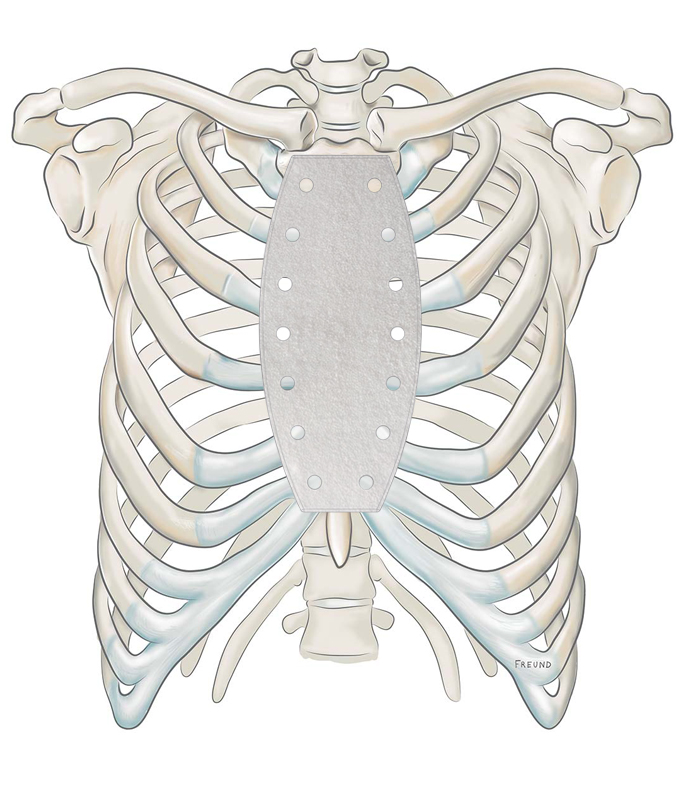Products & Services
Contact UsOur Products & Services
Our motto: So simple! So stable! The products are based on the principle of clipping. This allows easy intraoperative application of the appropriate implant.

STERNUM
The porous alumina sternum represents a development in the surgical treatment of metastases and bone infection. The ceramic sternum is biocompatible and has a mechanical resistance similar to that of the native sternum.

PECTUS EXCAVATUM
Using the Pectus Bar, the deformed bone structure of the thorax (chest wall, sternum, etc.) is moved from the inside to the outside as a result of support and counter pressure, thus correcting the deformity.

RECONSTRUCTION

DEFORMITY
STRATOS was developed in order to surgically manage deformities of the chest such as pectus excavatum, pectus carinatum and pectus arcuatum. This disease involves physiological side effects.

STERNAL CLOSURE
Partial or total sternotomy is used to gain a surgical approach for operations on organs of the mediastinum. Examples of operations include openheart surgery, coronary artery vein grafts and heart transplants.

TRAUMA

PECTUS EXCAVATUM

RECONSTRUCTION
The Bridges for all cases. Reconstruction of the chest wall or sternum becomes necessary whenever owing to tumours the affected tissue and affected parts of bone have to be removed. Paravertebral reconstruction – Dorsolateral resection of ribs also requires restoration of chest wall stability. Parasternal reconstruction – Mediolateral resection of ribs also requires restoration of chest wall stability. Reconstruction following (partial) resection of the chest wall – Resection of the chest wall (ribs) during tumorectomy calls for not only coverage of the soft-tissue defect but also stabilisation of the chest wall. Reconstruction following (partial) resection of the sternum – Resection of the sternum, or of the anterior chest wall, also requires not only coverage of the defect but also osseous stabilisation for restoration of the chest wall.

DEFORMITY

STERNAL CLOSURE

TRAUMA
Fractures of ribs and sternum.
SO EASY! SO STABLE! Costal fractures and sternal fractures are frequent injuries in the case of blunt thoracic traumas that occur as a result of external violence. Blunt trauma to the chest usually occurs in the case of traffic accidents, falls from a considerable height, occupational accidents, household accidents, during sporting activities or due to targeted physical violence. Patients usually suffer from severe pain and, as a result, consciously avoid breathing in deeply, coughing and movements that intensify the pain. Surgical stabilization of costal and sternal fractures can reduce pain and tends to speed up patient mobilization. Stabilization normally leads to rapid, complication-free orthotopic healing of the rib and sternum since the Titanium clips fix the fracture fragments in place in their anatomical position and help to reduce pain considerably.
